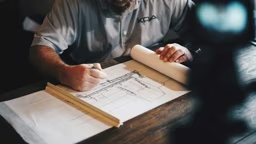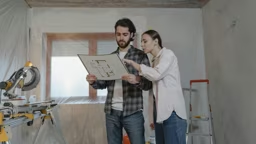
Photo: MossCreek / Just as you can combine the components of a log or timber structure, you can mix and match roofing materials. Doing so creates the look of a home that’s been enjoyed for generations.
Choosing a material to roof your new home is no small decision. Because a roof covers a significant amount of surface area, the material you select to top it off will not only impact the way your log or timber home looks, it also can affect energy performance and long-term maintenance requirements. Plus, it could weigh heavily on your overall building budget. Read on for a quick take on five top options.
Cedar Shakes

Photo: JK Lawrence
Pros
Because no two are exactly alike, shakes add distinct character to any home’s exterior. With proper maintenance, they can last upwards of 50 years. Their appearance changes over time due to natural weathering, which can lead to a charming, cottage-in-
the-woods appearance for a cozy log or timber cabin. Cons
Must have a full surface cleaning every two to three years to extend their lifespan. Prone to rotting, cracking or curling over time as a result of exposure to extreme moisture, UV rays or heat. High material and labor costs due to an intensive installation process.
Clay

Photo: Timberlyne/Texas Timber Frames
Pros
Clay is a sustainable material choice with a tried-and-true track record that dates back centuries. Known for producing cool, comfortable interiors, they can be manufactured to mimic other roofing styles, such as slate or wood shakes — not just the classic terra cotta barrel tiles indicative of a Southwest hacienda.
Cons
Very heavy and labor-intensive to install, resulting in a higher price point. Not impermeable to moisture.
Metal

Photo: HearthStone Homes
Pros
Able to fit a wide variety of aesthetics, metal roofs are available in a range of options, from copper and steel to zinc and aluminum, each with its own unique look. Regardless of type, a metal roof requires nearly no maintenance and is resistant to issues that plague other roofing materials, such as warping and rotting. Able to shed rain and snow with ease, metal is ideal for homes located in climes prone to extreme weather.
Cons
High initial investment. Weather-related noise will reach your interiors (though the rhythmic sound of rain hitting the metal panels could be seen as a plus). Experts say a metal roof is around 50 to 70 decibels louder than its asphalt counterpart, though solid decking and extra insulation can reduce that by half.
Asphalt

Photo: Elk Ridge Design Builders
Pros
It’s the most cost-effective and popular roofing option on the market (four out of five homeowners choose them). Asphalt shingles have a variety of benefits, including being lightweight, fire resistant and easy to install and maintain. Available in an array of colors and textures, asphalt can fit any style of home.
Cons
Color is known to fade over time, and shingles may lift or crack in extreme wind or weather conditions.
Slate

Photo: New Energy Works
Pros
Slate is by far the longest-lasting roofing choice on the market — in fact it typically outlives its owner. It’s mold and mildew resistant, fireproof and environmentally friendly. Seen as a luxury, it can increase your home’s value.
Cons
Highest priced residential roofing option, due to manufacturing, shipping and labor costs. If repairs are necessary, it can be difficult to color match an aged slate roof.











